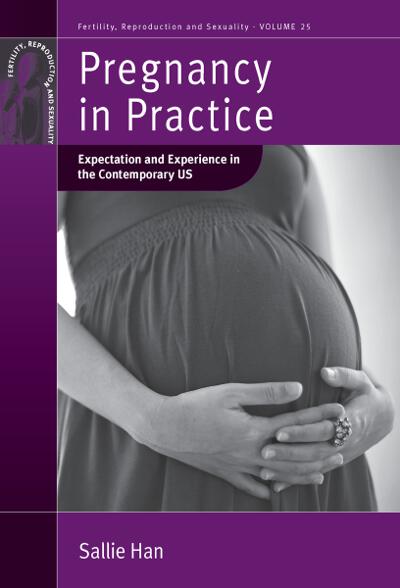Parents preparing to welcome a new bundle of joy follow certain conventions, from decorating the nursery to deciding on baby names, explains Sallie Han in her newly released volume, Pregnancy in Practice: Expectation and Experience in the Contemporary US. Below the author discusses the recent royal birth along these guidelines and explains that though they may be parents of the future King of England, Prince William and Duchess Kate Middleton are perhaps not so different from common parents as thought.
______________________________________
The Duchess of Cambridge and I have this in common: We shared a due date. She is the new mother of a future King of England. I am the new author of a book, Pregnancy in Practice: Expectation and Experience in the Contemporary US. I believe that the period of gestation for my book has been considerably longer.

It seems that there has never been so public a pregnancy, with the possible exception of reality show celebrity Kim Kardashian, who became the particular point of comparison with Kate Middleton because both women were believed to have due dates around the same time. This is not surprising, given the historical significance of the next-in-line to the English throne and the popular appeal of Wills and Kate. Yet, as a royal pregnancy watcher, I was struck by the ordinariness of it. Royal or not, the pregnancy as it has been portrayed in the media follows exactly the script.
For the last month before the rumored due date, it seemed that the world had been waiting impatiently for the birth of the royal baby. Or at least the media world has been all these 30-something weeks, beginning with the news that the Duchess of Cambridge had been hospitalized with hyperemesis gravidarum — nausea and vomiting so severe that it can lead to complications in the health of the pregnant woman and the child that she is gestating — which became the subject of educational and informational press articles on the condition.
Throughout the royal pregnancy, there has been a steady stream of press on what I call the imponderabilia of pregnancy. Nothing remained unexplored, from the running commentary on the pregnancy wardrobe to the coverage of the first official royal baby shower (and here is a link to an interesting piece on the ritual of the baby shower, which by the way complements a chapter in my book) to dish on the nursery décor. Along the way, we have been treated to speculation on the sex/gender of the royal baby, including a comic interpretation of the sonogram by The Onion, and a series of photographic imaginings by photographer Alison Jackson, not to mention the child’s name and whether or not the Duchess of Cambridge intends to breastfeed. We also learned about the Duchess of Cambridge’s interest in natural childbirth and particularly in hypnobirthing. Because we are talking about a “modern” royal pregnancy, there also has been discussion of the two weeks’ paid paternity leave that Prince William — like other new fathers in the UK, but alas, not in the US, where I conducted ethnographic research for my book — is entitled to take and apparently will take.
Although the amount and kind of attention given to this particular pregnancy might have been much more intense than the rest of us experience, pregnancies today are public, as I learned during the ethnographic research that I undertook for my book. A century ago, pregnant women were expected to enter into confinement in preparation for the birth. Now, clothing for pregnant women is designed to reveal, not conceal, the “baby bump.” Pregnant women are overwhelmed with information and advice not only on what to expect, but especially what is expected of them and how they should act, think, and feel.
Including when they ought to consider having another child.
_______________________________________
Sallie Han is Associate Professor of Anthropology at SUNY College at Oneonta.
